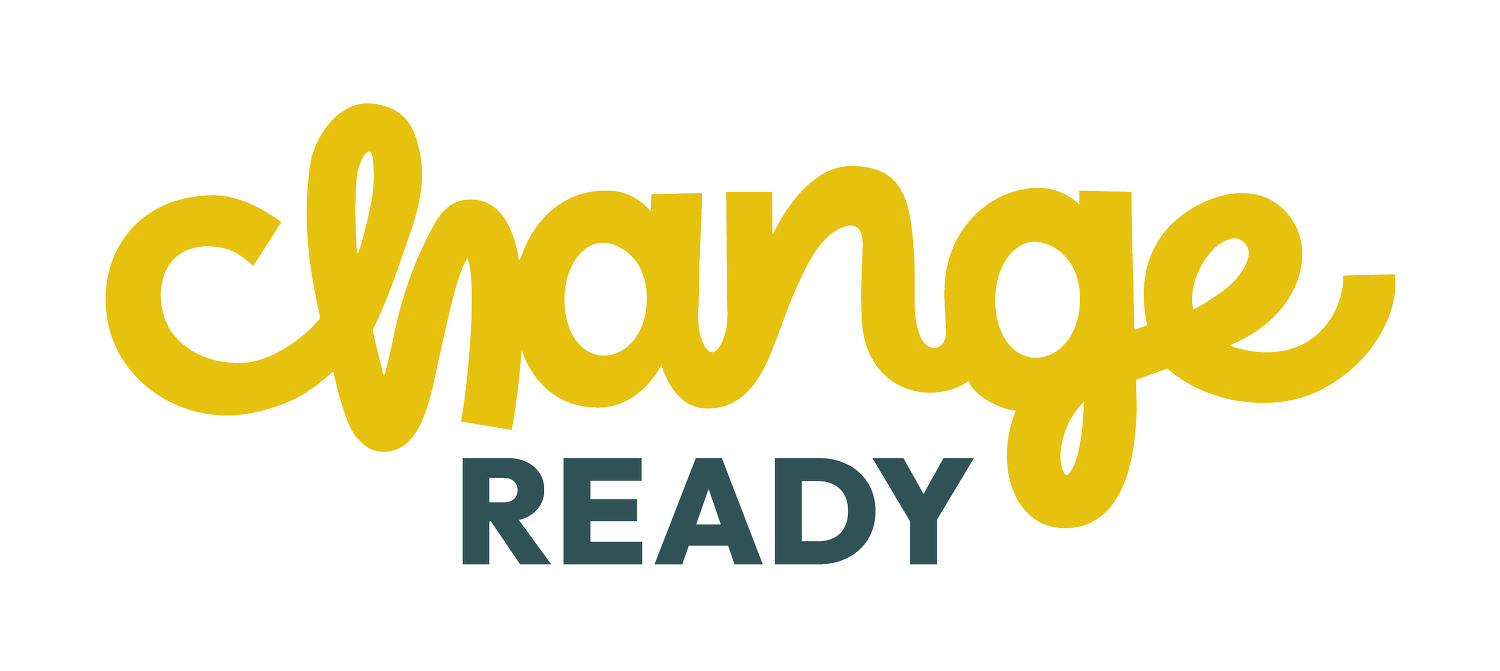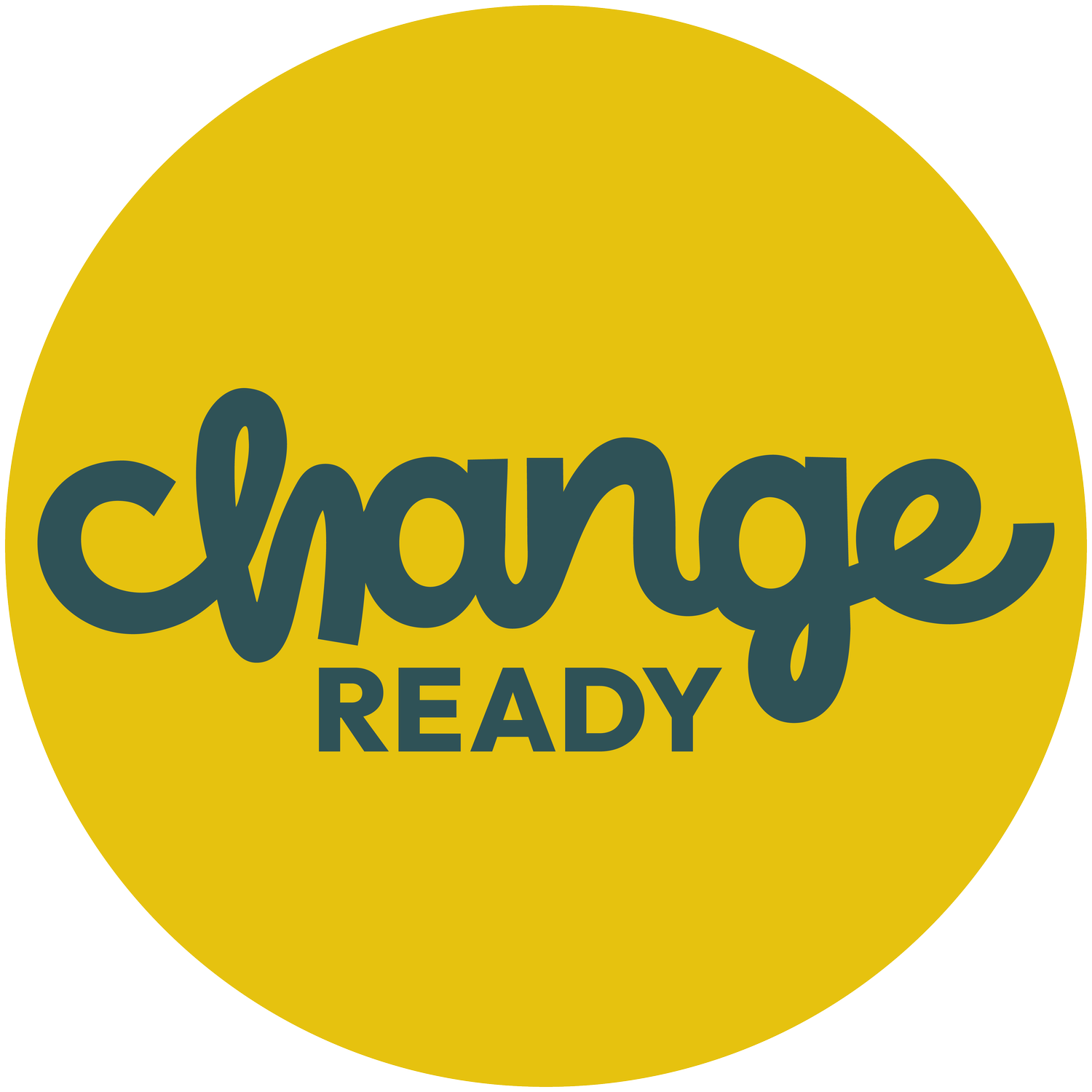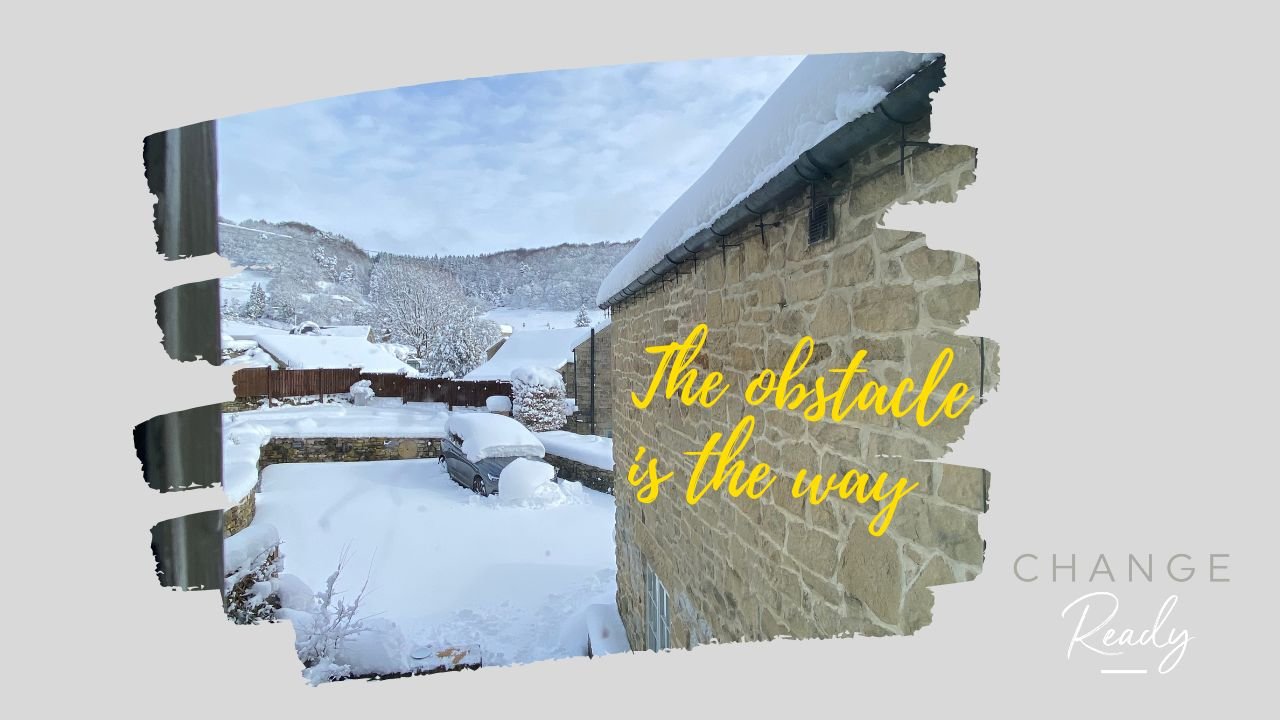How can you avoid slipping head-first into the change gap?
We’ve had snow here for a couple of days now and it’s beautiful! The view from my office window is picture-perfect. The sun is shining, trees are laden with snow and children are dragging their sledges to the hill. Disney has nothing compared to this stuff! A magical wonder of nature that never fails to impress.
For weeks I’ve been trying to get motivated to go out running first thing, but it’s so cold and miserable outside I’ve stayed under the duvet instead. This morning was totally different, I bounced out of bed for an early walk, making the first steps in fresh snow that fell overnight. And a snow angel… obvs!
Beyond the fairy tale scenes are fallen trees and impassable roads. Frustrated parents and people who can’t get to work or appointments. The car is buried under snow and the reality is we’re not going anywhere today and a few weekend plans have been cancelled. But we’re safe, warm and have a stocked up fridge, so no real drama. We can reframe it as an opportunity to hunker down and have a well-earned rest.
Mind the (productivity) change gap
On our walk, the snow was almost knee deep in places and hard going to move through. It made me reflect on how these obstacles life throws at us force us to slow down. This little bump in the road is welcome (for me at least), but other changes can feel more frustrating when everything winds down to a crawl.
I’ve seen this a lot in businesses where leaders haven’t ‘budgeted’ for the dip in productivity that can come when a new system is introduced, or processes change. Or when a recruitment drive adds new colleagues at pace without the time to bring them up to speed and include them fully. Even positive changes, like a new investment or big client win, can turn sour if the impact on people hasn’t been fully considered.
The real surprise is that it’s a surprise. A bit like when winter rolls round and it gets dark early (like every year, but that doesn’t stop us moaning). We all know that when something changes it takes time to learn the new ways of working. It takes practice to build your confidence, especially when things that used to be second nature suddenly feel alien. And there will be inevitable failures along the way while new habits form and you ‘unlearn’ what came before.
All this effort takes time and energy, it’s mentally draining and can be stressful. It distracts us from the day-job and creates a backlog - pushing problems down the road.
Prevention is better than cure
The work I do is all about supporting people through change. Not just because that’s the right (and human!) thing to do, but also because it prevents your business hurtling head first into a massive productivity gap and getting stuck there.
It makes that dip shallower, quicker and easier to climb out the other side, and less draining for everyone involved.
It makes it more likely that the changes will be adopted and the vision you imagined achieved, along with all the benefits you hoped the investment would bring.
The starting point is always awareness and acceptance. Understanding how change is likely to affect people and accepting it without judgment normalises the emotions we might experience and helps reduce anxiety around the change.
Design and trust in the process. In my work with teams we proactively design the way they’ll deal with change in their business. They create common tools and templates, developing a shared language and way of working. Carving out time to think things through in advance leaves them free to focus on making the change when it comes and work through it together. No more ‘figuring it out’ on the fly.
Focus on the choices you CAN make - let’s face it, even in collaborative organisations there are times where you might have less influence on a change than you’d like. Remember you still have a choice about how you react and respond, the decisions you make and the attitude and behaviours you bring to the task. That counts for a lot!
In Ryan Holiday’s brilliant book The Obstacle is The Way, he suggests we should accept what we can’t change and change what we can. This simple switch in perception and focus can make the change feel lighter and open up new routes forward.
I hope you enjoyed this article and feel inspired to try something new in your own business.
Get in touch if you’d like to talk about a change you’re making, or would like some help desiging the way you do change - I’d love to hear from you.
Davina
If you’re new here, welcome! I’m Davina, founder of Change Ready. I help leaders and their teams develop the skills and confidence to make change that matters, at work and in their communities. I offer a range of workshops, coaching and delivery options.
If you'd like to talk about a change you're working on, or need support, get in touch or book a free call here on the website.
If you enjoyed this article then sign up to my mailing list for more insights straight to your inbox and access to resources in our community space.
#ChangeReady
#ChangeShapers
#MakeChangeThatMatters



